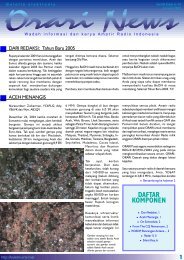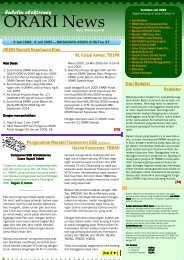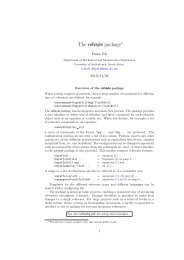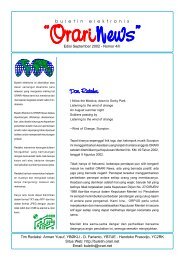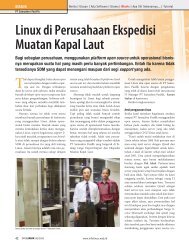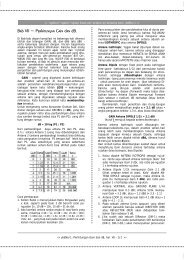You also want an ePaper? Increase the reach of your titles
YUMPU automatically turns print PDFs into web optimized ePapers that Google loves.
The procedure of checking for self-oscillation in an r-f power<br />
amplifier described previously will normally show up most trouble<br />
and allow for its correction. If, however, the correction is marginal,<br />
it may sometimes happen that under operating conditions the selfoscillation<br />
will be triggered off. The oscillation may occur only on the<br />
peaks of amplitude modulation or on keying surges. By observing<br />
the r-f envelope on a cathode ray oscilloscope, the oscillation can<br />
usually be seen. The trouble can be fully eliminated by pursuing<br />
further the outlined corrective procedure.<br />
A more difficult self-oscillation to locate is one occurring on a<br />
harmonic of the fundamental frequency and occurring only when<br />
the stage is operating. It will show up when testing for the presence<br />
of abnormal power in the harmonics under operating conditions.<br />
In the case of an audio amplifier employing tetrodes or pentodes,<br />
small non-inductive resistors of about 100 ohms resistance should<br />
be placed in series with the anode, and possibly the grid as well,<br />
in case self-oscillation of the amplifier occurs in the very high<br />
frequency portion of the r-f spectrum. Should the audio or d-c<br />
voltage drop in the resistor be objectionable, it can be shunted with<br />
a small coil.<br />
Another form of commonly encountered self-oscillation is known<br />
as “dynatron” oscillation. Dynatron oscillation is caused when any<br />
electrode in a vacuum tube has negative resistance. Secondary<br />
emission characteristics of the screen grid in a tetrode were<br />
discussed in Section 2.2; it was pointed out that at times there<br />
may be more electrons leaving the screen grid than are arriving. If<br />
the screen voltage is allowed to increase under these conditions,<br />
even more electrons will leave the grid; the phenomenon implies<br />
a negative resistance characteristic. If there is high alternating<br />
current impedance in the circuit from the screen grid through the<br />
screen grid power supply, and from the anode power supply to the<br />
anode, dynatron oscillation may be sustained.<br />
Dynatron oscillation typically occurs in the region of one to 20<br />
Hz. This low-frequency oscillation is usually accompanied by<br />
another oscillation in the 1000-2000 kHz region. Suppression of<br />
these oscillations can be accomplished by placing a large bypass<br />
capacitor (1000 µF) across the output of the screen grid power<br />
supply. The circuit supporting the oscillation can also be detuned<br />
by a large inductor. Increasing the circuit losses at the frequency of<br />
oscillation is also effective.<br />
73




